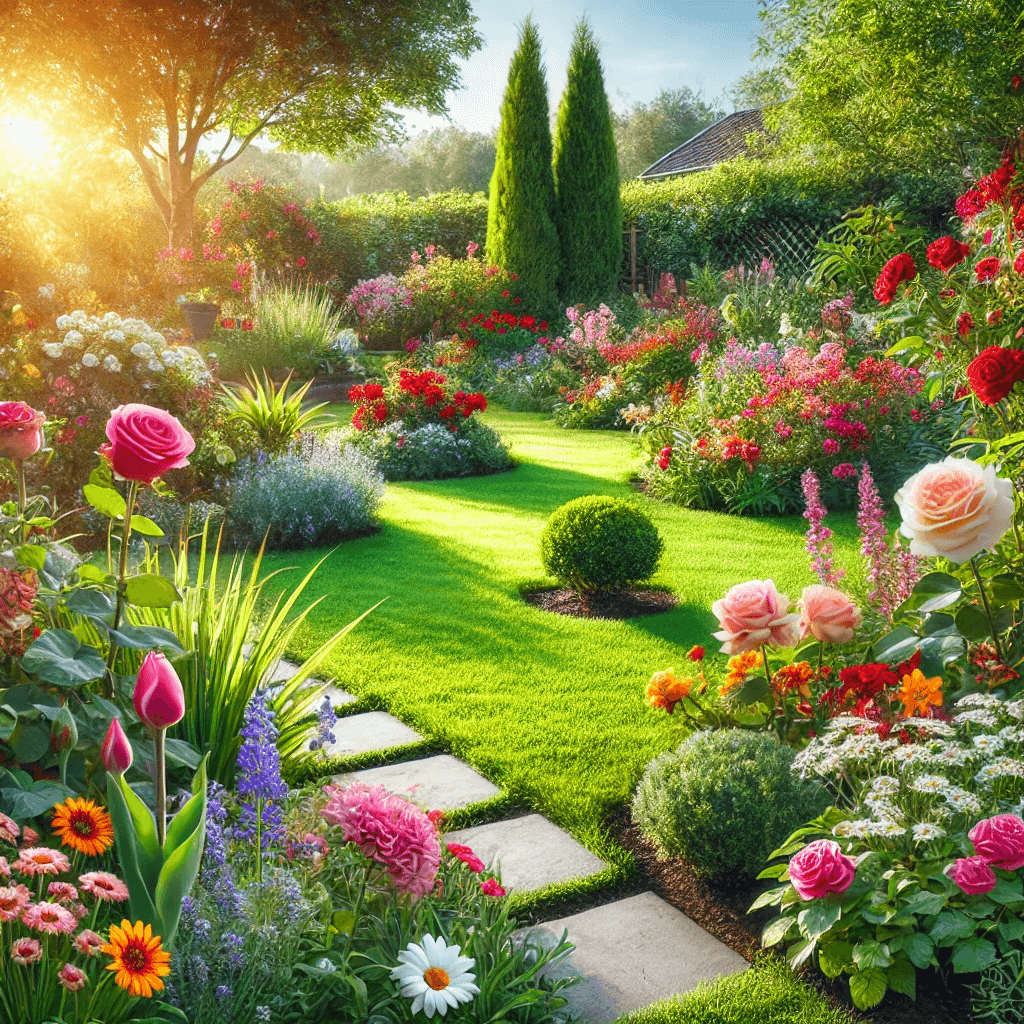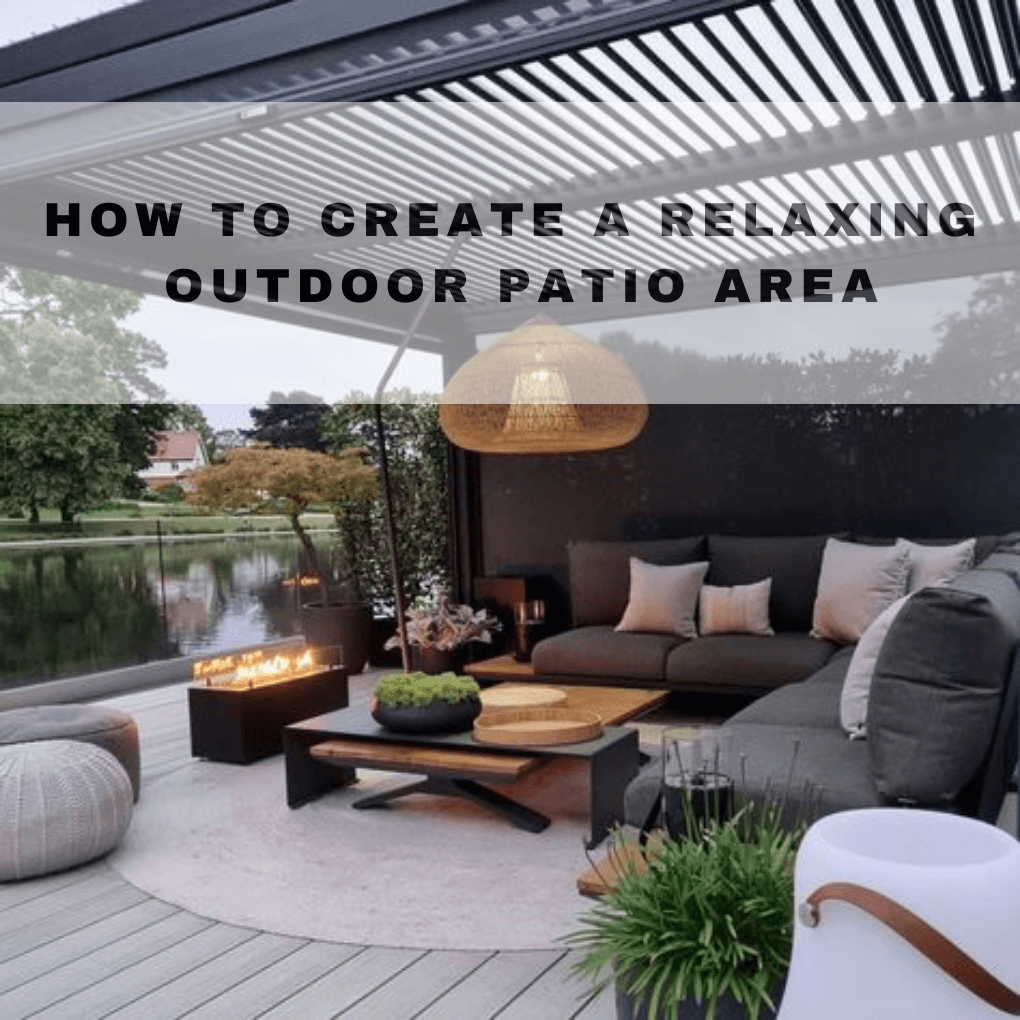Having a beautiful outdoor garden requires regular attention and care. With the right approach, anyone can maintain a thriving, healthy garden that adds charm to their home. This article offers practical tips for keeping your outdoor garden beautiful throughout the seasons.
Keep Your Garden Clean and Organized
A tidy garden is not only more aesthetically pleasing but also healthier for your plants. Regularly cleaning and organizing your garden prevents pests, weeds, and diseases from taking hold.
Remove Weeds Regularly
Weeds compete with your plants for water, nutrients, and sunlight, making it important to remove them promptly.
- Use hand tools to gently remove weeds by their roots.
- Remove them early in the morning when the soil is moist.
- Regularly inspect your garden for new weeds.
Weeding is essential for maintaining the health of your garden, as it ensures your plants get the resources they need to grow.
Clear Dead Leaves and Debris
Fallen leaves, branches, and other debris can attract pests and foster diseases, affecting plant growth.
- Use a rake to gather leaves or a blower to clear large areas.
- Dispose of collected debris in compost bins to prevent it from harboring pests.
Keeping your garden debris-free not only enhances its beauty but also helps keep your plants healthy.
Watering Your Garden Properly
Proper watering is crucial for your garden’s health. Overwatering or underwatering can harm plants, so understanding how to water them effectively is key.
Water Early in the Morning
Watering your plants in the early morning helps prevent diseases and ensures water is absorbed efficiently.
- Early morning watering reduces water loss due to evaporation.
- This also gives plants enough time to dry off during the day, reducing fungal growth.
Morning watering allows your garden to thrive without the risk of disease from damp conditions.
Use a Drip Irrigation System
A drip irrigation system is an excellent way to water plants evenly and efficiently.
- Drip irrigation delivers water directly to the base of the plants, minimizing water waste.
- It reduces the risk of diseases caused by wet leaves.
A drip system can make watering easier while ensuring your plants get the exact amount of water they need.
Regularly Trim and Prune Plants
Trimming and pruning are essential for maintaining a garden’s shape and encouraging healthy growth. Regular pruning promotes better air circulation, reduces the risk of disease, and ensures that plants grow in the desired shape.
Prune Dead or Damaged Branches
Removing dead or damaged parts of plants helps prevent the spread of disease.
- Use clean, sharp pruning shears to cut dead branches back to healthy growth.
- Make cuts at a slight angle to help the plant heal and prevent water damage.
By removing damaged parts, you’re promoting a healthier garden environment for new growth.
Trim for Shape and Size
Pruning also helps maintain the shape and size of plants.
- Regular trimming encourages compact growth, making plants more aesthetically pleasing.
- Trim back overgrown branches and stems to help your plants stay in proportion.
Trimming and shaping your plants regularly keeps your garden looking neat and well-maintained.
Fertilize Your Garden
Fertilizing your garden is an essential part of plant care. Fertilizers provide essential nutrients that help plants grow strong and vibrant.
Choose the Right Fertilizer
Choosing the right fertilizer for your plants is crucial for their growth.
- Organic fertilizers, such as compost, release nutrients slowly and are gentler on plants.
- Synthetic fertilizers are faster acting but should be used with care.
Knowing the right type of fertilizer to use ensures that your plants get the nutrients they need without being overwhelmed.
Apply Fertilizer at the Right Time
Applying fertilizer at the right time of year ensures your plants are well-fed during critical growth periods.
- Fertilize in early spring to give plants a boost as they begin to grow.
- Avoid fertilizing in late fall, as plants are preparing to go dormant for the winter.
Proper timing is key to successful fertilization, so follow a schedule based on the needs of your garden.
Mulch Your Garden
Mulching is a simple yet effective way to improve the health of your garden. Mulch helps retain moisture, suppresses weeds, and keeps the soil temperature stable.
Choose the Right Mulch
The right mulch can make a big difference in your garden’s success.
- Organic mulches, such as bark or wood chips, improve soil structure as they break down.
- Inorganic mulches, like gravel, provide lasting weed control.
The right type of mulch depends on the needs of your plants and the climate of your region.
Apply Mulch Correctly
Proper mulch application is important for maximizing its benefits.
- Spread mulch evenly around plants, leaving space around the stems to prevent rot.
- Apply a 2-4 inch layer of mulch to retain moisture but avoid over-mulching.
Mulching not only improves your garden’s health but also keeps it looking neat and well-kept.
Control Pests and Diseases Naturally
Preventing pests and diseases is a critical part of maintaining a healthy garden. Natural solutions are often the best way to protect your plants without harming the environment.
Use Natural Pest Control Methods
Instead of relying on harmful chemicals, use natural methods to manage pests.
- Plant marigolds or basil around vegetables to naturally repel insects.
- Encourage beneficial insects, like ladybugs, which feed on pests like aphids.
Natural pest control is an environmentally friendly way to manage your garden without relying on harsh chemicals.
Inspect Your Plants Regularly
Routine checks for pests and diseases help catch problems early before they spread.
- Look for signs of insect damage, like holes in leaves or discolored spots.
- Check the underside of leaves for pests like aphids or spider mites.
Early detection is key to keeping your garden healthy and pest-free.
Choose the Right Plants for Your Garden
Selecting plants that thrive in your specific climate and soil conditions is essential for reducing maintenance and ensuring success.
Consider Your Climate
Different plants thrive in different climates.
- Research your local hardiness zone to know which plants are most suited to your environment.
- Choose plants that can withstand your area’s temperature extremes.
Selecting plants that match your climate ensures your garden is naturally resilient and requires less care.
Choose Low-Maintenance Plants
Opt for plants that require minimal care, especially if you’re a busy gardener.
- Succulents, native plants, and herbs are often low-maintenance options.
Low-maintenance plants are ideal for a garden that is both beautiful and easy to manage.
Conclusion
Maintaining a beautiful outdoor garden doesn’t have to be difficult. By following these simple tips—such as keeping your garden clean, watering properly, and choosing the right plants—you can create a thriving space that brings joy all year round. Regular care and attention are all it takes to keep your garden looking its best.




